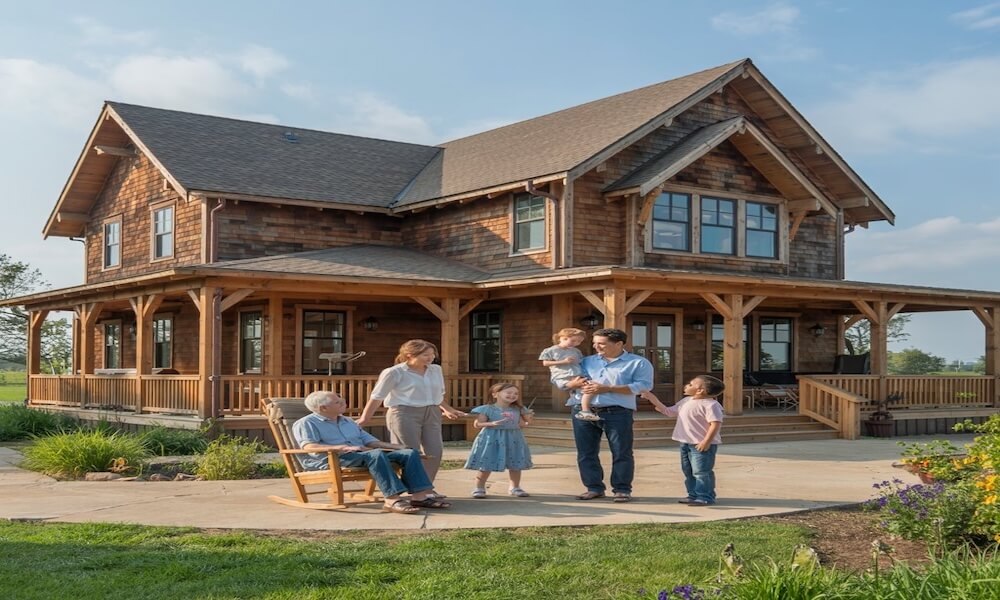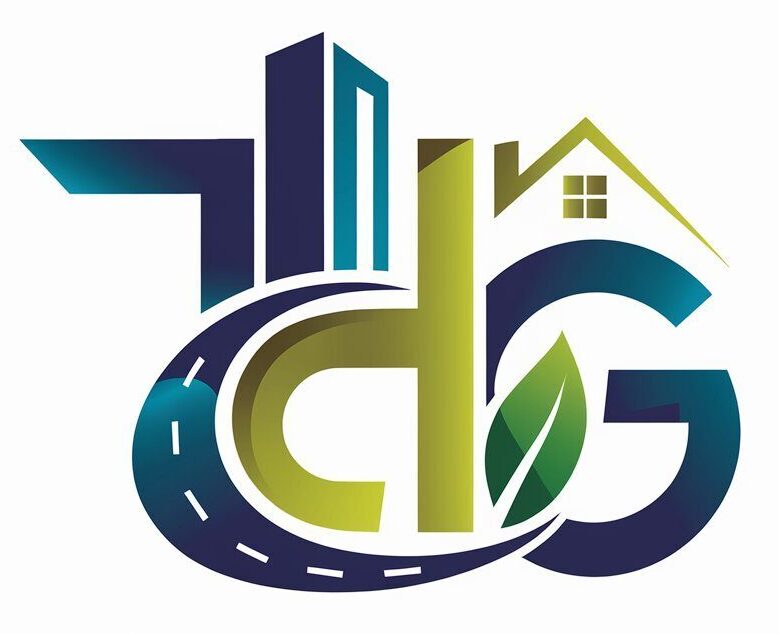Future-Proofing a Custom Home
Future-Proofing a Custom Home: Building with Tomorrow in Mind
Building a custom home gives you a unique opportunity not only to create your dream living space for today—but also to prepare for what lies ahead. From technological changes to shifting family needs, “future-proofing” means designing and constructing your home so that it remains relevant, functional, and valuable well into the future.
In this article, we’ll explore smart strategies for future-proofing your custom home. Whether you’re looking to age in place, reduce your environmental footprint, or adapt to emerging tech, these ideas will help ensure that your home stands the test of time.


Flexible Floor Plans: Designing for Life’s Changes
One of the most important aspects of future-proofing is planning for change. Families grow, shrink, and evolve—and your home should be able to do the same.
Smart Ideas:
- Multi-use rooms: A guest room that doubles as an office or hobby room offers long-term flexibility, plan this at the interior design phase.
- Open-concept layouts: These provide flow, natural light, and adaptability over time.
- Main-level bedrooms: Ideal floor plan for aging in place or accommodating limited mobility in the future.
- Basement or attic space: Unfinished areas give you the option to expand to a multi-generational home without major renovations later.

Technology Integration: Building a Smart Home from Day One
Smart homes are becoming standard, and wiring your home with future upgrades in mind is one of the smartest moves you can make.
Future-Proof Tech Options:
- Structured wiring: Install Cat6 or fiber-optic cables for high-speed internet and internal networking. Wi-Fi alone might not cut it in a few years.
- Smart lighting systems: Invest in hubs like Lutron or Philips Hue that can be expanded later.
- Smart thermostats and HVAC: Systems like Nest or Ecobee offer automation, remote access, and learning features.
- Security and surveillance: Hardwire camera points and consider smart locks or video doorbells.
- Dedicated tech closet: Install a central hub where routers, servers, or future upgrades can live neatly.
Tip: Even if you’re not installing every smart feature now, pre-wire and leave conduit access points—it’s cheaper and easier during the initial build.

Energy Efficiency and Sustainability
Energy costs and environmental concerns aren’t going away. Building with energy-efficient materials and systems can save money and reduce your carbon footprint long-term.
Key Areas:
- Insulation: Use spray foam or high-performance batt insulation for better thermal control.
- Windows: Install double- or triple-pane, Low-E glass for efficiency.
- Solar readiness: Even if you don’t install solar panels immediately, orient the roof for future use and include conduit and space for inverters and batteries.
- High-efficiency HVAC and water heating: Consider geothermal systems or tankless water heaters.
- Energy-efficient appliances: Look for Energy Star ratings.
Bonus: These investments not only reduce bills but can boost your home’s resale value.

Aging in Place and Accessibility
If you plan to live in your home long-term, aging in place should be a key consideration—even if you’re not close to retirement yet.
Design Choices:
- Zero-step entryways: Make at least one entrance accessible without stairs.
- Wider doorways and hallways: Aim for at least 36 inches wide to accommodate wheelchairs or walkers.
- Walk-in showers with bench seating: Safer, stylish, and accessible for all ages.
- Blocking for grab bars: Install reinforcement in bathroom walls during construction even if you’re not adding bars now.
These subtle changes don’t compromise design but make life easier down the road.

Storage and Utility Space
Smart storage is always a good idea, but in a future-proof home, it’s essential. Over time, your needs will change—and having space to adapt is key.
Ideas:
- Walk-in pantry: As lifestyles shift, the demand for food storage (especially with bulk buying) increases.
- Expandable closets: Consider adjustable shelving systems.
- Garage and attic storage: Build in cabinets and consider attic trusses for extra usable space.
- Mudroom or drop zone: Great for growing families and organizing gear.

Water Management and Climate Considerations
Changing climate patterns and local weather extremes should factor into your long-term home strategy.
Protective Measures:
- Proper grading and drainage: Prevent basement flooding or foundation erosion.
- Sump pumps and backwater valves: Critical in areas prone to heavy rainfall or flooding.
- Gutter guards and French drains: Reduce future maintenance and water damage risk.
- Fire-resistant materials: In wildfire-prone areas, consider fire-rated roofing and siding.
Tailor your materials and design to your region’s climate for long-term durability.

Low-Maintenance Materials
The less time and money you spend on upkeep, the easier life becomes.
Options to Consider:
- Fiber cement siding or brick: Durable and weather-resistant.
- Metal roofing: Can last 40–70 years and resists damage.
- Quartz countertops: Tougher and lower-maintenance than natural stone.
- Luxury vinyl plank (LVP) flooring: Durable, waterproof, and stylish.
These material choices reduce the long-term burden of repairs and replacements.

Home Office and Remote Work Space
The shift toward remote and hybrid work is likely to remain. Building in dedicated office space now can make your home more adaptable and marketable.
Design Tips:
- Soundproofing: Use insulation or acoustic drywall for peace and privacy.
- Natural light: Position desks near windows.
- Built-in storage: Keep the space tidy and productive.
A home office can also double as a study space, craft room, or extra bedroom when needed.

Resale Considerations
Even if you’re building your forever home, life can be unpredictable. Designing with resale in mind adds value and flexibility.
Smart Moves:
- Neutral color palettes and classic finishes: Timeless designs attract a wider pool of buyers.
- Energy-efficient certifications: LEED or HERS ratings can boost appeal.
- Functional layouts: Avoid overly customized features that won’t work for others.
